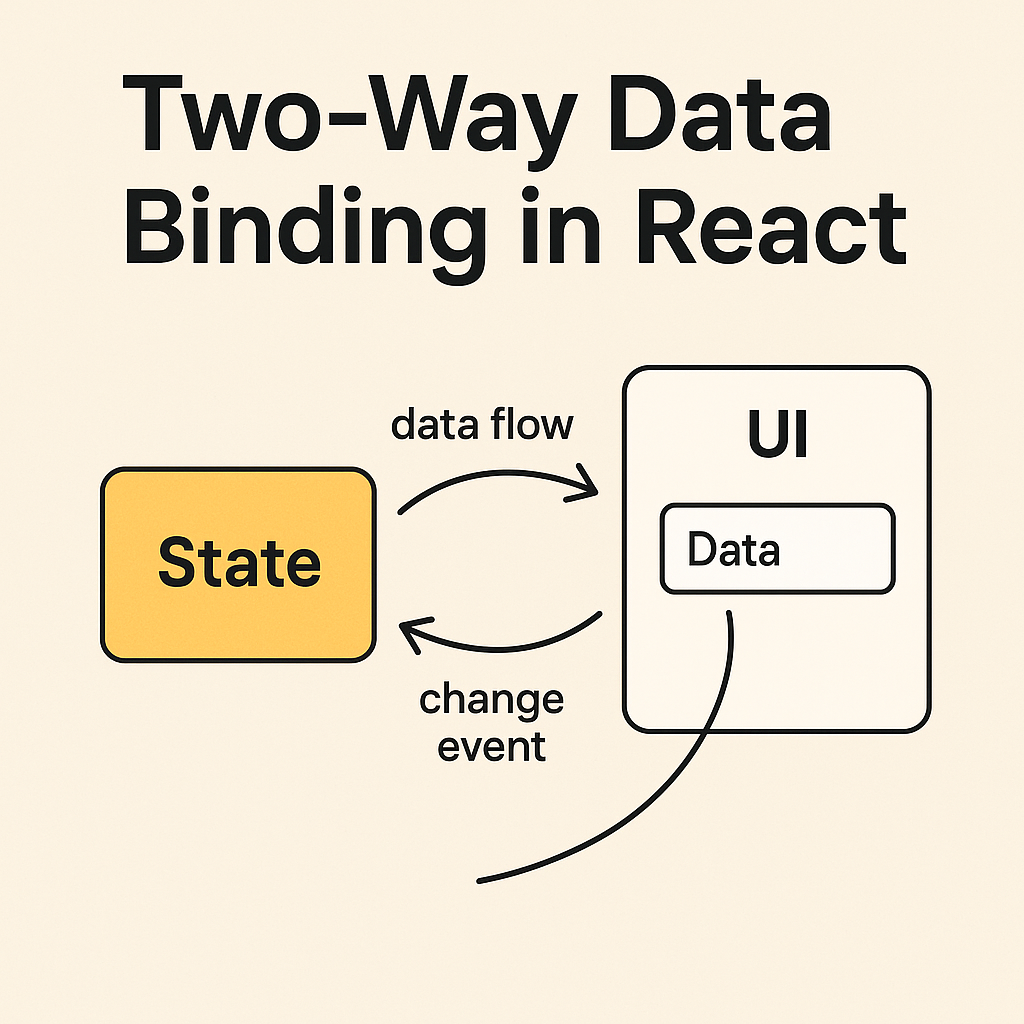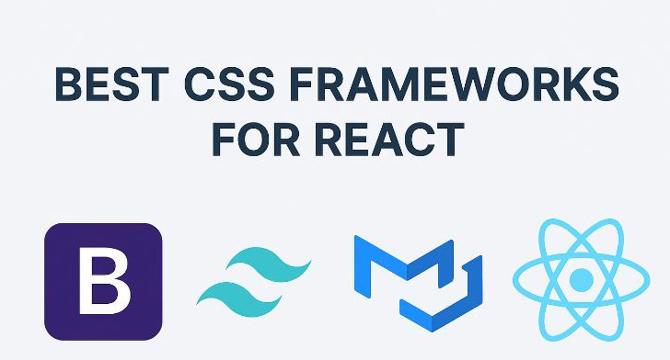React
Dev
81

Image Credit: Dev
⚡ Boost React Performance with Lazy Loading + Suspense
- Optimizing React apps is crucial for faster load times and better user experience.
- Lazy loading involves breaking down JavaScript bundles into smaller chunks loaded on-demand.
- It significantly reduces initial payload, improves Time-to-Interactive (TTI), and enhances overall performance.
- React.lazy() dynamically imports components, improving asynchronous code loading.
- Suspense component in React allows for displaying fallback UI during component loading.
- Lazy loading is useful for React components, data fetching, and managing loading states.
- Route-level code splitting with React Router optimizes loading by splitting code based on routes.
- Placing
strategically in your app can ensure a smooth loading experience. - Final takeaways: Lazy loading, Suspense, and route-based splitting can significantly boost React app performance.
- Include Error Boundaries, use bundler tools, and browser developer tools for optimal implementation.
Read Full Article
4 Likes
Bloomberg Quint
256

Image Credit: Bloomberg Quint
Wall Street Strategists React To Moody’s US Credit Rating Cut
- Moody's Ratings downgraded the US credit rating, leading to a decline in US stocks and a rise in Treasury yields.
- The S&P 500 Index ETF fell by 1% post announcement to Aa1 from Aaa.
- Fitch Ratings and S&P Global Ratings also graded the US economy below the triple-A position.
- The risk of President Donald Trump's tariff regime adds to the economic uncertainty.
- Wall Street professionals express caution as tariffs may impact business and consumer confidence.
- Reacting to the news, experts predict caution in equity markets due to the US credit downgrade.
- The downgrade may affect other countries' sovereign debt as US Treasury bonds are considered a benchmark.
- Investors anticipate profit-taking in equities following the strong market rally.
- The downgrade signals concerns about the US fiscal dysfunction and tariff risks.
- The impact on stocks may be less severe compared to previous credit rating downgrades.
Read Full Article
15 Likes
Dev
45

Image Credit: Dev
Mastering React Advanced Hooks with TypeScript: Simulating a Dynamic Equation System
- React applications utilize advanced hooks like useContext, useReducer, and useLayoutEffect for efficient state management and data sharing without excessive boilerplate.
- This article demonstrates implementing these hooks in a practical scenario of simulating a system of equations with shared coefficients and synchronized updates using React + TypeScript.
- Key implementations include a global math context with useContext, state transitions and actions managed with useReducer, and layout synchronization ensured with useLayoutEffect.
- By combining these advanced hooks in React with TypeScript, users can effectively model and manage dynamic equations and interface elements in a mathematical context.
Read Full Article
2 Likes
Dev
81

Image Credit: Dev
Mastering React Hooks with TypeScript: Simulating Cellular Behavior in a Functional Component
- React hooks are essential for interactivity and state management in React development without using class components.
- Types of React hooks like useState, useEffect, useRef, useContext, useReducer, useMemo, and useCallback have biological analogies for managing component behavior.
- A simulation of a living cell using React hooks and TypeScript demonstrates tracking energy, age, and lifecycle events of a cell.
- The simulation showcases how React hooks like useState, useEffect, and useRef can be used to model complex systems in software with concepts inspired by biology.
Read Full Article
4 Likes
Discover more
Dev
333

Image Credit: Dev
Actually how does work React Awesome framework Next.Js ?
- Next.js is a React framework developed by Vercel, aimed at simplifying the process of building server-rendered and statically generated React applications.
- Next.js offers features like server-side rendering (SSR), static site generation (SSG), API routes, image optimization, built-in CSS and Sass support, module CSS, and file-based routing.
- By utilizing Next.js, web developers can benefit from improved SEO, faster performance, seamless styling, and simplified routing for both frontend and backend workflows.
- Whether you're creating a simple blog or a complex web app, Next.js provides a powerful set of tools to enhance your development experience and build blazing-fast, SEO-friendly applications.
Read Full Article
20 Likes
Medium
342

Image Credit: Medium
Understanding Two-Way Data Binding in React (and Why It’s Rarely Used)
- Two-way data binding in React means data from state updates the UI, and changes in UI update the state effortlessly.
- React doesn't use two-way binding by default but opts for one-way data flow for explicit and predictable updates.
- Although React prefers one-way data flow, you can create your own two-way binding using custom components if needed.
- Implementing two-way binding in React involves manually updating the state with event handlers for a clearer and more controlled approach.
Read Full Article
20 Likes
Dev
252

Image Credit: Dev
📚 The Ultimate React Interview Preparation Guide for Senior Software Engineers (2025)
- This guide is tailored for senior software engineers preparing for React interviews.
- It covers essential React fundamentals such as JSX, Virtual DOM, components, props, event handling, and lifecycle methods.
- Advanced concepts like hooks, context API, error boundaries, React portals, and state management strategies are discussed.
- Performance optimization techniques, routing, form validation, testing, TypeScript integration, and component design patterns are highlighted.
- App architecture, scalability, security best practices, server-side rendering, deployment, integration, accessibility, and internationalization are essential topics.
- Soft skills like leadership, mentorship, code reviews, architectural decisions, and collaboration are emphasized for senior roles.
- The guide aims to prepare candidates with a holistic view of React, beyond basic concepts, for successful senior React interviews.
- It stresses the importance of practical experience in mastering these topics for interview success.
- Several aspects like soft skills, performance optimization, and leadership are crucial for senior software engineering roles.
- The roadmap provided in this guide can be a valuable resource for excelling in senior-level React interviews.
- For additional formats like a handwritten iPad roadmap, mind map, or PDF checklist, the author offers to convert the content upon request.
Read Full Article
15 Likes
Dev
328

Image Credit: Dev
This Week In React #234: TanStack DB | 0.80 RC, Expo, Legal, Re.Pack | Rslib, Composites...
- TanStack DB is a new library with a blazing fast query engine and robust transaction primitives, built in collaboration with ElectricSQL.
- React Server Components support is being worked on by the Vite team, along with a new React Query proposal.
- Articles cover topics like using React context, creating custom React renderers, and managing state with actors in React.
- React Native 0.80 RC.1 brings TypeScript improvements, support for radial gradient, and React 19.1 compatibility.
- The React Native Legal library simplifies OSS license screens, while Re.Pack 5.1 focuses on Module Federation 2 support.
- Expo introduces faster local development with build cache providers, and the Nightmare on Apple Street discusses challenges of iOS app publishing from Linux.
- Rslib is a library development tool by ByteDance Web Infra Team, and Lightning CSS 1.30 brings relative color spec and nesting spec for pseudo elements.
- React Universe Conf is scheduled for 2-4 September, React Native Skia 2.0 requires React 19 and RN 0.78 minimum, and Rive React Native 9.3 adds Data Binding support.
- Clerk Billing allows setting up subscriptions without custom payment code, and WithFrame offers pre-built React Native templates.
- Simon Grimm talks about React Native AI Apps, while React Native Radio discusses new architecture with Riccardo Cipolleschi.
- Matt Pocock introduces Arrays and Objects composites, shape() function in CSS provides powerful drawing syntax, and Rslib aims to be an ideal library development tool.
Read Full Article
19 Likes
Dev
301

Image Credit: Dev
Level Up Your Forms with React 19's useActionState Hook
- Handling forms in React has been traditionally complex and involved managing state and change events.
- React 19 introduced the useActionState hook, simplifying form handling.
- The useActionState hook eliminates the need for manual state management and change handlers in forms.
- This hook significantly reduces the re-render triggers, especially useful for large forms.
- The useActionState hook manages form state updates and server actions together for simplified form submissions.
- It takes actionFn, initialState, and formRef as parameters and returns currentState, action, and isPending.
- An example usage involves defining an action function for form submission like submitForm.
- The Form component uses the useActionState hook with the defined action function and initial form state.
- By providing defaultValue and defaultChecked attributes, form input values are retained after submission.
- The author, Bharat, is an experienced Front-End developer focused on improving developer experiences.
Read Full Article
18 Likes
Designbeep
347

Image Credit: Designbeep
Best CSS Frameworks for React: Which One Should You Use?
- React developers benefit from CSS frameworks to streamline development, enhance performance, and improve user experience.
- Top CSS frameworks for React in 2025 include Tailwind CSS, Material UI, Chakra UI, and Bootstrap for React.
- Tailwind CSS offers a utility-first approach for custom designs with a focus on composability and small file sizes.
- Material UI implements Google's Material Design with improved customization and strong TypeScript support.
- Chakra UI prioritizes developer experience with intuitive styling, reducing cognitive load and supporting complex interfaces.
- React Bootstrap and Reactstrap modernize Bootstrap for React, emphasizing pre-styled components and improved customization options.
- Ant Design caters to enterprise-level applications with comprehensive components, strong internationalization support, and data-heavy interface solutions.
- Styled Components revolutionize styling in React by enabling CSS-in-JS for component-scoped styles and dynamic styling patterns.
- Mantine offers accessibility-focused React components with customization options and a modular architecture for optimized bundle size.
- Emotion stands out as a powerful CSS-in-JS library with flexible styling solutions and performance optimizations suitable for complex applications.
Read Full Article
20 Likes
Dev
238

Image Credit: Dev
Functional Components vs Class components in React
- React offers two main ways to define components: Functional and Class-based, with a shift towards functional components with the introduction of React Hooks.
- Functional components are plain JavaScript functions that return JSX and now can handle state and side effects through Hooks.
- Class components are ES6 classes that extend from React.Component with more boilerplate and use of 'this', but still relevant for legacy projects and understanding React's lifecycle.
- Functional components are preferred in modern React development due to their concise nature, ease of use, and full feature support via Hooks, offering cleaner and more efficient code.
Read Full Article
14 Likes
Medium
58

Image Credit: Medium
How I Optimized My React Application to Handle 3M+ Monthly Visitors
- Implemented code splitting with React Lazy & Suspense to reduce initial load time and improve time-to-interactive.
- Utilized caching and memoization techniques such as React.memo, useMemo, and useCallback to prevent unnecessary re-renders and reduce CPU cycles.
- Optimized server-side rendering (SSR) with Next.js for SEO boost, faster content delivery, and reduced server load.
- Integrated image and asset optimization strategies, lazy loading, and used a CDN with HTTP/2 for reduced latency and improved resilience.
Read Full Article
3 Likes
Dev
422

Image Credit: Dev
React Native 0.79+ New Architecture: Bridging with Android Native Modules
- React Native allows developers to interact with platform-specific code using Native Modules for accessing native Android features.
- The blog post details creating a native module in Android and bridging it with React Native, including calling native methods and sending data between React Native and Android.
- Steps provided involve defining interface in Kotlin class, registering the native module with React Native using a package, and calling native methods from React Native in the app.
- By following these steps, developers can effectively bridge JavaScript with the native Android layer to integrate SDKs or platform-specific features not readily available in React Native.
Read Full Article
25 Likes
Cryptopotato
396

Image Credit: Cryptopotato
Binance Drops Bombshell PI Hint: How Will Pi Network’s Price React?
- Binance has posted a cryptic hint related to Pi Network, featuring multiple references to the mathematical constant π, sparking speculation about a potential listing of the Pi token.
- Pi News, a prominent channel covering Pi Network news, shared Binance's post with its 1.1 million followers, leading to assumptions that the hint points towards an upcoming listing of Pi token on the platform.
- Binance previously conducted a community vote favoring the addition of PI token for trading, but no action was taken. Recent speculations arose after the Pi Network team teased an announcement on May 14, eventually revealing a $100 million fund for PI-native projects.
- Despite the ongoing rumors and speculations about Binance experimenting with PI token transactions, there is no official statement from either side. Nevertheless, the price of PI token has reacted positively to the hype, increasing by 8% within a few hours.
Read Full Article
23 Likes
Hackernoon
18

Image Credit: Hackernoon
Every Popular React Pattern You Should Know About
- In the world of React, patterns refer to proven approaches to solving tasks. Popular patterns in React ecosystem focus on organizing components and logic for clarity, maintainability, and reusability.
- The Container & Presentational Components pattern separates logic (Container) from presentation (Presentational). This improves separation of concerns, enhances reusability, and simplifies testing.
- Higher-Order Components (HOCs) are functions that enhance a component with additional functionality. While they can add powerful capabilities to multiple components, they can also introduce complexity and nesting.
- The Render Props Pattern is an approach where a component takes a function to determine what to render, offering flexibility in how components render content based on external instructions.
- Hooks and Custom Hooks in React have replaced many older patterns. They allow for logic reuse without introducing additional component layers, leading to clearer and more concise code.
- Compound Components focus on building flexible UIs by having multiple components work together as a single unit. This pattern leverages composition and context to create complex behaviors.
- React Suspense simplifies asynchronous data handling by pausing rendering of components until data is ready and showing fallback UI in the meantime. It offers a more declarative approach to managing loading states.
- Server Components in React aim to combine server-side rendering and client-side SPAs for improved performance and security. They separate components that run on the server from those that run on the client, leading to faster rendering and reduced bundle size.
- React developers should be familiar with these patterns to understand how to structure and optimize their React applications. Each pattern offers unique benefits and considerations for different scenarios.
- Experimenting with these patterns hands-on helps developers grasp their strengths and limitations, leading to cleaner, more manageable React code. Understanding these foundational ideas can enhance the quality of React applications.
Read Full Article
1 Like
For uninterrupted reading, download the app